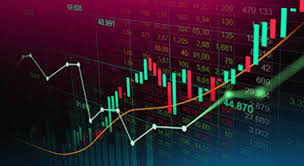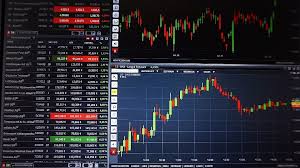
Forex trading time plays a significant role in successful trading. Knowing when the market is most active can lead to increased profits. The Forex market operates 24 hours a day, five days a week, across different time zones. This continuous operation is made possible due to major financial centers across the globe, allowing traders to participate in the market at virtually any time. To maximize your trading efficiency, it’s crucial to understand the best times to trade and how to navigate the different sessions. For comprehensive resources and tools, consider checking out forex trading time Trading Broker KH.
Understanding Forex Market Sessions
The Forex market is divided into four primary trading sessions:
- Asian Session
- London Session
- New York Session
- Overlap Sessions
1. Asian Session
The Asian session starts around 11 PM GMT and ends at around 8 AM GMT. Tokyo is the leading financial center during this period, representing a significant amount of forex trading volume. However, activity can be relatively slow compared to other sessions. The volatility tends to be lower, and the currency pairs associated with the Japanese yen and Australian dollar see more action.
2. London Session
Starting at 7 AM GMT and concluding at 4 PM GMT, the London session is considered the most active trading session. This session sees a lot of trading volume as it accounts for approximately 35% of all daily trading. Major economic announcements and news often come out during this time, triggering significant market movements. Traders should be alert during this session as liquidity and volatility are typically at their peak, making it a prime time for trading.
3. New York Session
This session runs from 12 PM GMT to 9 PM GMT. It overlaps with the London session during the first few hours, creating a highly liquid market situation. The New York session is significant because it’s where the U.S. dollar is traded the most. Economic reports released throughout the session can lead to rapid price changes and trading opportunities.
4. Overlap Sessions
The overlap between the London and New York sessions, occurring from 12 PM to 4 PM GMT, provides traders with the best opportunities due to the high level of market activity. Experienced traders often focus on this time frame to capitalize on volatility and price movements, as liquidity is exceptionally high.

Optimal Times to Trade
Identifying the best times to trade can lead to significant advancements in your trading strategy. Opting to trade during peak hours allows traders to benefit from enhanced liquidity, meaning they can execute trades at better prices without slippage:
Best Currency Pairs to Trade by Session
1. **Asian Session:** Focus on pairs like USD/JPY, AUD/USD, and NZD/USD.
2. **London Session:** Major pairs such as EUR/USD, GBP/USD, and USD/CHF tend to be more active.
3. **New York Session:** This period is suitable for trading pairs involving the USD, such as USD/CAD and USD/JPY.
The overlap session can provide opportunities in various currency pairs due to unpredictable price action.
Factors Influencing Forex Trading Time
Several factors can influence trading times and trends:
1. Economic Events
The forex market is immensely affected by economic indicators and news releases, such as interest rate announcements, employment statistics, and inflation reports. Traders should keep an eye on economic calendars to prepare for potential market movements.
2. Geopolitical Events
Any geopolitical instability can lead to volatility in the forex market. Unexpected events like elections, trade agreements, or natural disasters can change market dynamics significantly. Traders must stay informed about global news that could affect currency values.

3. Market Sentiment
The mood of market participants can dictate forex trading behavior. Traders need to pay attention to sentiment indicators, which can help anticipate price movements based on market psychology.
Trading Tips Based on Forex Trading Time
To leverage the ideal trading times effectively, consider the following tips:
1. Develop a Trading Plan
Establish a strategy that outlines when and how you intend to trade pertinent to the specific market hours you’ll be active in.
2. Use Stop-Loss and Take-Profit Orders
In volatile periods, it’s critical to protect your capital by using stop-loss orders, ensuring that your losses are minimized during adverse market movements.
3. Monitor Currency Correlations
Understanding how different currency pairs interact can provide context during overlapping sessions to formulate better trading strategies.
4. Stay Informed
Keep yourself updated with relevant financial news, market analysis, and economic data releases, as this information can significantly impact your trading approach.
Conclusion
Understanding forex trading time is essential for effective trading. By recognizing the different trading sessions, optimal trading times, and external factors influencing market movements, traders can devise strategies that enhance their chances of success in the forex market. As you navigate through the exciting yet challenging world of forex, remember that continuous education and practice are key to becoming a proficient trader.
